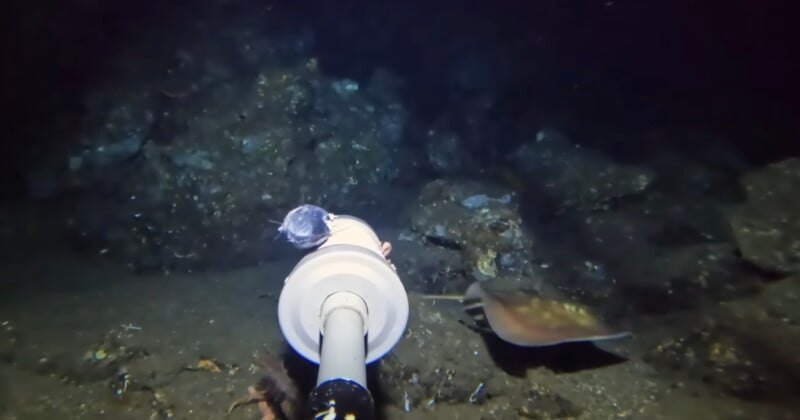YouTuber Drops Camera in Ocean and Films an Unknown Deep-Sea Species
A YouTuber dropped his camera to the bottom of the ocean and recorded a deep-sea animal that no one has been able to identify.
YouTuber Barny Dillarstone has been dropping underwater cameras all over the Indo-Pacific in search of his goal to find a species which is “new to science.” Earlier this year, he dropped his underwater camera rig 200 meters (656 feet) below the surface of the Bali Sea in Indonesia, to the seafloor over two consecutive nights.
The footage he later recovered showed a wide range of little-seen nocturnal marine life, including conger eels, nautilus, moray eels, duck-billed eels, spider crabs, carrier crabs, and several other unusual deep-sea species that typically stay hidden from view.

Among these recordings was one sequence that immediately stood out, in which Dillarstone captured an animal that even experts have been unable to classify. The clip, released in late July, shows the moment his bait-rigged camera was sent down after dark to observe what emerges in deep water at night. During the second night of filming, the camera picked up a deep-water ray known as a “stingaree.”
Stingarees belong to the wider stingray family and are usually found in parts of the Indo-Pacific, especially off eastern Australia, where the common stingaree is known to live. But their recognised range does not normally include the waters where Dillarstone was filming.
“Stingarees aren’t really supposed to be in Indonesia,” the YouTuber says in the video.
Dillarstone explains that the Java stingaree is considered extinct, while the Kai stingaree has only ever been documented from two juvenile specimens caught off eastern Indonesia. Marine biologists he later consulted were also unable to identify the animal and suggested that Dillarstone may have captured footage of a species never recorded in that area before.
“So what species is this one?” he says. “The answer is we have no idea. Perhaps it’s a species new to science. It’s not every day that you capture a creature that might rewrite part of the regional species record.”
The oceans account for around 99.5% of Earth’s habitable space by volume, and vast areas remain unexplored. Scientists estimate that as many as two million species could inhabit the world’s oceans, and some estimates suggest the total may be even higher. But, according to a report by the World Register of Marine Species in 2023, fewer than 250,000 marine species have been formally identified so far.
Image credits: All photos by YouTuber/ Barny Dillarstone.